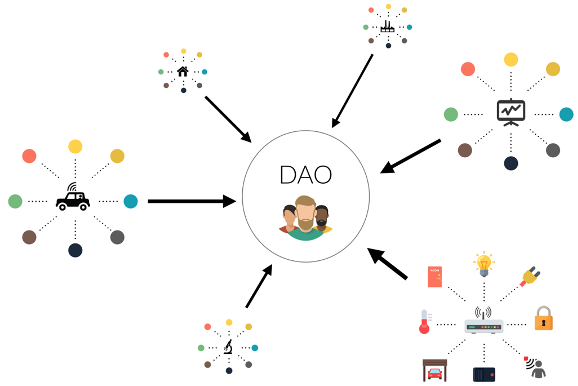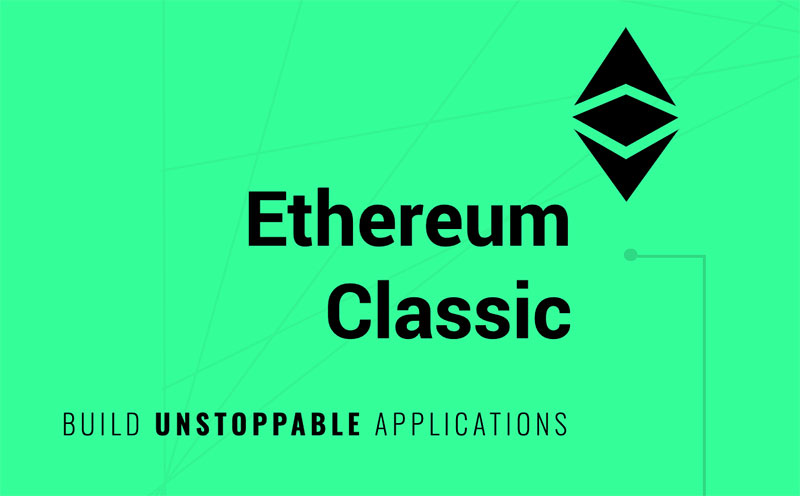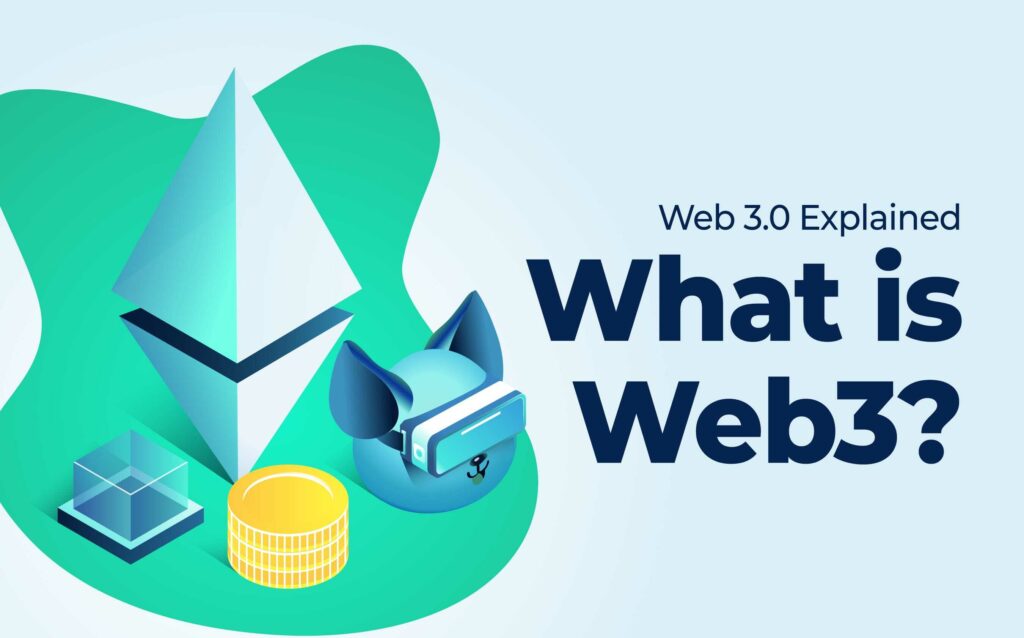This article will answer these questions and more in this discussion about Ethereum vs. Ethereum Classic.
Ethereum’s Origins
There was a time when only a single Ethereum existed. Its origins began in 2013. That’s when computer programmer and writer, Vitalik Buterin, proposed creating a new programming language. He wanted to build something that could support applications on top of Bitcoin. Bitcoin was (and still is) a one-trick pony that allows for secure peer-to-peer transactions. It is digital money and can also be considered digital gold because of its scarcity and store of value properties. However, Vitalik had grander visions.
Learn about Bitcoin at Moralis Academy by taking the Blockchain and Bitcoin Fundamentals course.
Unfortunately, his idea never gained traction within the Bitcoin community. But as they say, one person’s loss is another’s gain. Finding no interest from the Bitcoin side of the aisle, Vitalik conducted one of the most significant crowdsourcing efforts in crypto at the time. He was able to amass approximately $17 million to build the global, open-source blockchain known as Ethereum.

Ethereum’s native token, ETH, has different descriptors like digital money, global money, and a currency for the digital future. But, regardless of what people like to call it, ETH facilitates and secures the Ethereum network. Besides ETH, Vitalik co-founded Ethereum to enable smart contract functionality for programmers to build decentralized applications (dApps).
What Is a Smart Contract?
A smart contract is a digital agreement between two parties, and the Ethereum blockchain automatically executes these contracts when specific terms are met. Smart contracts present new opportunities for certain businesses to do things more efficiently without third-party oversight.
Many cryptocurrencies use smart contracts, but Ethereum was first. More importantly, Ethereum remains the leader in innovative dApps built in its ecosystem. What are dApps? Follow the link to find out.

The History of Ethereum vs. Ethereum Classic
To understand Ethereum vs. Ethereum Classic and how the two chains originated, we must first look at the DAO.
Ethereum devs created the DAO to fund future dApp development on the Ethereum blockchain. The DAO was the first decentralized autonomous organization. More importantly, it offered colossal promise for entrepreneurs looking to pitch new ideas and investors looking to rake in large profits from such ventures.
The DAO Is Born
In April 2016, the DAO raised 12.7 million ETH, approximately $150 million at the time. This kind of money made the DAO one of the most extensive crowdfunding campaigns of its time.
Participants had first to purchase DAO tokens with ETH. These tokens were interchangeable with ETH. Moreover, they also allowed the holders to vote on which dApps to support. Thus, ventures that exceeded 20% of the required community support got a share of the DAO’s pooled investment funds.
But like so many other situations in life, big money attracts the flounders, and flounders, in turn, attract the sharks. In the world of crypto, sharks typically take the form of malevolent hackers.

The Great DAO Hack
Millions of dollars worth of tokens floating about on a new platform sent black hats scurrying off to all-night probing sessions trying to find cracks in the code. Eventually, they found one whereby the network repeatedly refunded DAO tokens without registering the transaction on the public ledger.
The devs who coded the DAO smart contract didn’t think about would-be exploiters seizing on what’s known as a “recursive call.” Hence, exploiters could keep sending ETH refunds to themselves before the internal balance updated the deductions.
The hacker(s) systematically reduced the DAO to a free ATM handing out money in a costly loop of unaccounted-for refunds.
The hacker(s) could have endlessly taken free candy from the DAO store, but they suddenly stopped at 3.6 million ETH (approximately $50 million). However, the hack was significant in more ways than just the sheer dollar amount. At the time, the hackers’ loot accounted for roughly 5% of all the ETH in existence.
Stopping the Hack
Fortunately for the DAO community, the 28-day rule prevented the attacker(s) from getting instant access to their ill-gotten gains. So the ETH wasn’t completely gone yet. The community still had time to scratch their heads, assess the situation, and try to find a way out of this pickle.
Notably, this exploit wasn’t Ethereum’s fault. The vulnerability came from within the DAO’s code built on Ethereum. Nonetheless, news of the hack spread quickly, damaging Ethereum’s reputation with every retweet. The team understandably felt forced to intervene and stop the bleeding.

To Fork or Not to Fork?
After deliberating, the team voted to hard fork the network. There can be multiple reasons for a blockchain to hard fork and divide into separate blockchains. Forks can result from technological upgrades. Or community members can so strongly disagree that the only solution is to hard fork.
Proposed protocol changes can also split communities into warring factions. Protocol changes can come from futuristic, big-picture individuals whose forward-looking efforts intimidate the traditionalists. Hence, any push to improve functionalities can elicit reactions.
However, hackers can also cause enough damage to split a community—precisely what happened with Ethereum. The DAO community saw a hard fork as the best solution. They could turn back time before the hack and return the stolen funds to their rightful owners. Moreover, the hard fork would make the ledger look like the hack never happened.
To sum up, this dramatic hack and the community’s reaction would forever alter the course of Ethereum.
Ethereum vs. Ethereum Classic – The Split
The new fork took the “Ethereum” name, and the old blockchain took “Ethereum Classic.” The two chains resulting from the split had one difference initially: Ethereum Classic kept the record of the hack to preserve its immutable ledger. Ethereum, on the other hand, ran as a parallel network and edited its ledger so that the hack had never happened. Thus began the Ethereum vs. Ethereum Classic saga.

Thus with the community split, hack victims joined the majority of users on Ethereum. Those who revered immutability stayed with Ethereum Classic.
Learn about Ethereum at Moralis Academy by taking the Ethereum Fundamentals course.
Ethereum vs. Ethereum Classic – The Hard Fork Aftermath
Even when circumstances dictate it, hard forks rarely happen without controversy, and this particular ideological rift is what sprang Ethereum Classic into existence.
The philosophical divide of Ethereum vs. Ethereum Classic continues to this day and boils down to two divergent choices:
1. A revised blockchain that erased a successful hack.
2. An immutable blockchain that retains the permanent record of its entire history, including the unpleasant parts.
Today, Ethereum still maintains the support of most people, along with Vitalik Buterin, Ethereum’s co-founder and primary creator. Vitalik became Ethereum’s “face of the franchise” and has become one of the most influential figures in crypto.
Sympathy for the Devil
Even with Ethereum’s superior features, it’s still hard not to sympathize with the Ethereum Classicists’ point of view. If one of blockchain’s tenets is immutability, then it’s untenable for a central authority to edit outcomes they don’t like. Hence, the Ethereum Classic proponents were ideologically correct in taking their hard stance.
For those who believe the “code is king” ethos, the choice had to be Ethereum Classic. Nevertheless, the cost of being an idealist usually results in picking a losing horse. And choosing the winner is easy if we judge the Ethereum vs. Ethereum Classic debate based on who has the most toys.
ETH vs. ETC – Which One Wins?
Ethereum ended up with a vastly superior market cap, mass adoption, and innovation. But if immutability is a tenet of the blockchain, then Ethereum Classic could be the winner.
Regardless of the winner-loser debate, however, most of the community believed that a hard fork was necessary. It was the only way to save Ethereum’s reputation and prevent the affected token holders from getting soaked for $50 million.
But if human intervention can supersede decentralization any time a problem arises, how is Ethereum different from other centralized institutions? It’s a tough call for anyone to make. But King Dollar typically rules the decision-making process with so much at stake.

How Are ETC vs. ETH Similar?
Besides having different tokens (ETH is Ethereum’s native token while Ethereum Classic uses ETC), Ethereum and Ethereum Classic have retained some similarities. After all, the chains remained identical until block 1,920,000 when the attack occurred. So, since they stem from the same source, the two should share something in common.
Firstly, they remain similar from a functional perspective. Because both Ethereums are smart-contract platforms, they offer users the ability to build dApps on their blockchains. Secondly, both still operate pseudonymously. This feature means that while public keys remain open, a user’s identity and other personal details remain private.
After their paths diverged, however, Ethereum Classic’s updates do not reflect those Ethereum has made on its march toward ETH 2.0. Ethereum has amassed a more comprehensive array of functionalities over time. Let’s look at some more differences.
Ethereum vs. Ethereum Classic – Seven Differences
1. ETH
ETH has become the fuel for new dApps in the form of “gas.” Many dApps require at least a small amount of ETH for users to perform actions. This action alone creates more demand for ETH than ETC.
2. Market Cap and User Base
Ethereum has a more extensive user base. Its market cap of over $377 billion dwarfs Ethereum Classic at just over $4 billion. Most importantly, because Ethereum retains higher liquidity, less volatility, and is more prevalent on exchanges than Ethereum Classic, ETH is less risky for investors than ETC.
3. Powerful Support
Ethereum’s popularity has attracted some heavy-hitting backers like the Enterprise Ethereum Alliance. This business alliance has more than 200 members with big names like JPMorgan and others in its clique.
4. Innovative dApps
First came the flurry of ICO activity in 2017. Next, there was the DeFi revolution in the summer of 2020. The NFT explosion happened only last year. With Web3 closing in, we’ll see new sensations on the horizon like GameFi and Metaverse projects. Ethereum is “where it’s at.” It is ever-evolving with everything from Layer-2 solutions to Ethereum 2.0 upgrades.
If you’re not sure about these terms, please follow the links:
What is Metaverse? How does Web3 work? NFTs Explained, What are some of the top games in GameFi?

5. Consensus Mechanisms
Ethereum is moving to Proof of Stake while Ethereum Classic continues with Proof of Work.
6. Immutability
Ethereum allows for prior transactions to be adjusted while Ethereum Classic sticks to its guns where immutability is concerned.
7. Flexibility
Ethereum is open to change, while its Classic counterpart is loyal to Ethereum’s original rules.
The Future of Ethereum Classic
If Ethereum’s future seems limitless, Ethereum Classic’s is unclear. In fact, the waters look downright murky. Besides a lethargic vibe, a series of 51% attacks have caused many developers to lose confidence in the network.
The 51% attack happens when hackers get enough hashing power to control the network. Once they gain control, they can alter the blockchain and pull off stunts like double-spend transactions. Restoring users’ trust in Ethereum Classic could therefore prove challenging.
Other analysts insist that Ethereum Classic needs to change its consensus mechanism to PoS. Not only to avoid future hacks but also to stay relevant with the global push towards energy-efficient blockchains.
Ethereum Classic – Some Positives
When examining Ethereum Classic vs. Ethereum, it’s easy to see that Ethereum has innovative dApps making it unlikely for Ethereum Classic ever to match. There are way too many users already committed to Ethereum.
On a more positive note, Ethereum Classic has performed some upgrades to make it more interoperable with the Ethereum protocol. These kinds of actions demonstrate the community’s intention to build bridges with Ethereum and other communities.
Furthermore, due to an exploit, Ethereum Classic’s mainnet split on September 3, 2021. This incident caused an unplanned hard fork. While some community members strongly opposed the hard fork, others argued that it represents more freedom.
Ethereum vs. Ethereum Classic – Conclusion

So, the tale of the two Ethereums continues. The divorce has favored Ethereum thus far. But the question posed by decentralization purists still beckons. Is code really king? Or does King Dollar rule the Ethereum ecosystem? When crises such as costly hacks unfold, will the temptation always call for human intervention? A $50 million hack doesn’t taste nice, but could more minor crises provoke reactions like censorship or altered transactions? Only time will tell.
One thing is for sure. Blockchain developers are in high demand! Whether you’re into Bitcoin, Ethereum, or Ethereum Classic, you can learn how to become a blockchain developer by signing up for Moralis Academy. The sooner you start, the sooner you can earn!




